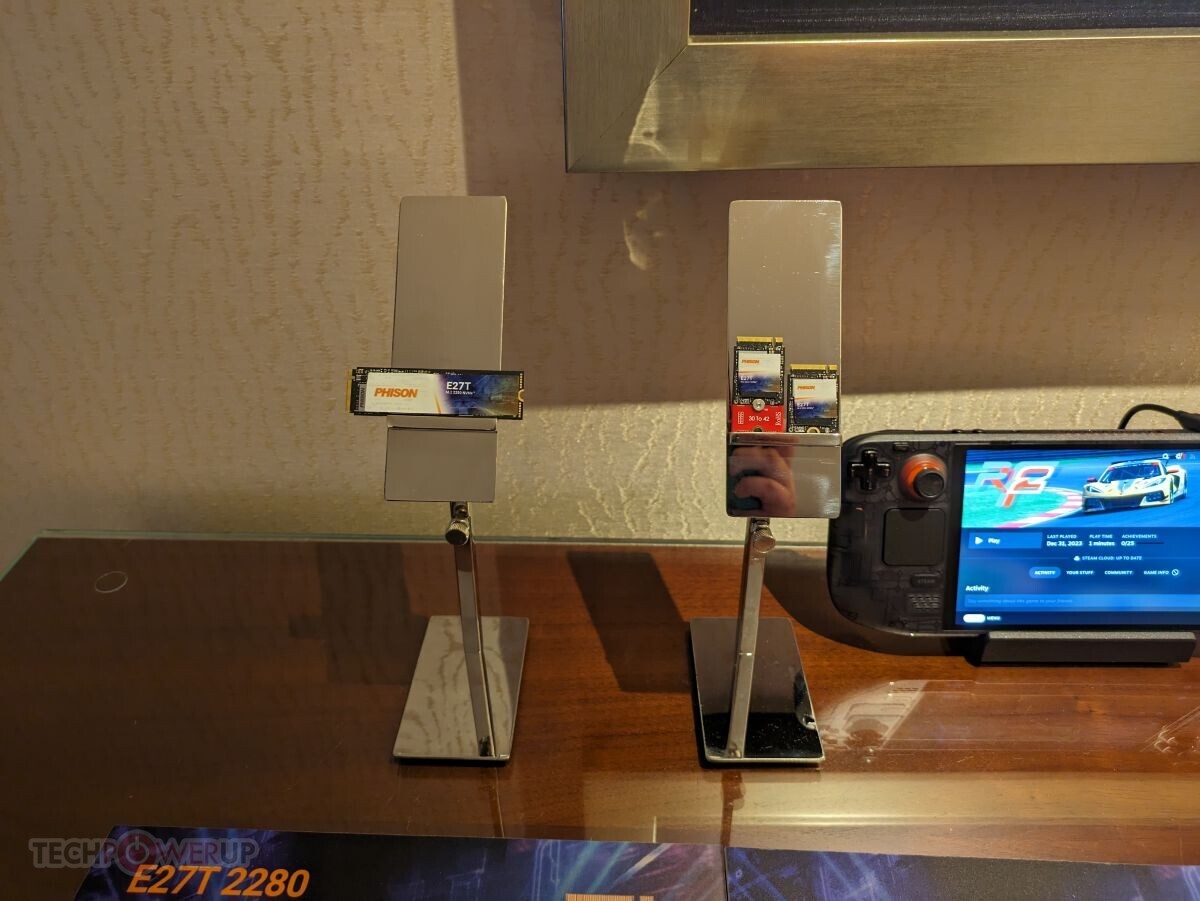https://www.techpowerup.com/317611/cooler-pcie-gen-5-ssds-incoming-as-phison-embraces-7-nm-with-latest-crop-of-controllers PCIe Gen 5 based M.2 NVMe SSDs have a nasty habit of heating up to deliver sequential transfer speeds over 10 GB/s, requiring some awful cooling solutions with tiny fans. All this might change, as Phison, a leading SSD controller manufacturer, unveiled three new controllers in the 2024 International CES, built on the TSMC 7 nm foundry node. This is a big upgrade from the 12 nm node on which its first Gen 5 controllers used. The star attraction here is the PS5031-E31T, a DRAMless controller meant for mainstream Gen 5 SSDs. This controller has a 4-channel flash interface (16 CE), a PCI-Express 5.0 x4 host interface, supports capacities of up to 8 TB, and is claimed by Phison to offer sequential transfer rates of up to 10.8 GB/s, and up to 1500K IOPS random access; exceeding the fastest Gen 4 SSDs.
Phison also updated its high-end controller lineup with the new PS5026-E26 Max14um. This is a variant of the E26 that's designed for the upcoming Micron B58R NAND flash chip that offers 2400 MT/s per channel transfers. Over the 8-channel interface of the E26, this finally unlocks sequential transfer speeds exceeding 14 GB/s reads, and 12.7 GB/s sequential writes. The E26 Max14um is the first controller to surpass 1000 MB/s in all three PCMark 10 storage tests.
Next up, we have the PS5027-E27T. The E27T is a highly power-optimized 4-channel DRAMless controller with a PCI-Express 4.0 x4 interface, purpose built for small M.2-2230 SSDs powering handheld gaming consoles. Lastly, there's the PS2251-21 (U21). This is a brand new single-chip solution designed for the 40 Gbps USB4 interface, wiring out 4-channel NAND flash, with sequential transfers on offer that nearly max out the interface, measured at up to 4 GB/s. This controller allows portable SSD designers to do away with USB4 bridge chips that convert a USB4 uplink to a PCIe Gen 3 x4 downlink, and to have a clunky M.2 drive under the hood. Now you just have one of these chips directly wired to the NAND flash.
Hopefully the smaller die will result in cooler temps. Hopefully no huge heatsink and/or fan will be needed.

